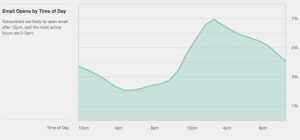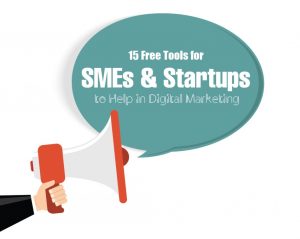— April 25, 2019
Is your website failing to drive business? You may be having problems with your web development. Read more here.

You launched your new e-commerce website and you’re excited about the promise of increased business.
You sit back and wait for the traffic to roll in. And then you wait some more.
After a few coffees, you realize it’s not catching on the way you expected. But why?
It’s very possible that it isn’t what you’re selling that’s the problem. You likely have a web development issue, that can be fixed.
Let’s take a look at common web development issues that hold businesses back and how to reverse them.
1. You Lack a Value Proposition
When it comes to content, what you present to website visitors is very important. While it’s okay to tell people your brand philosophy and some of your achievements (like many companies do), you have to make it relevant for potential customers.
That means you should take the time to develop a value proposition. There needs to be a focus on the products or services you’re offering – you tell the potential customer how these offerings can solve a problem that they have.
Think about what sets your products apart from your competitors, and then hammer that home in your website messaging. Tell them how you can better serve them or more affordably meet their needs.
2. You Don’t Know Who Your Audience Is
You could have heavy website traffic, but that doesn’t mean a thing if you don’t generate any sales leads from them.
This step of creating quality leads, not just website traffic, should actually start before the website is even built. Questions you should ask yourself include;
- Who am I selling to?
- What do those people need to succeed?
- How do they want to be communicated to?
Experts in the industry call this building buyer personas. It helps you narrow down your target audience by reviewing data and analytics among other steps to see what people are searching for, and from where.
You can even survey customers to find out what they want to see from your offerings, and what their biggest challenges are that you can help solve.
Then it’s your job to take all this information to create buyer personas that can target leads like a laser beam. By appealing to the specific tastes of your target audience and even modifying website design to accommodate their online behaviors, you can strike gold.
3. You Don’t Have a Blog
You may be lucky enough to have a chance visitor buy something through your website. But the real victory is making them into long-term customers. Easier said than done? Not always.
You may think writing a blog is not important in an overall marketing strategy, but you’d be wrong. A regularly updated blog provides a reason for customers to come back, especially when you give them the information they need or can’t get anywhere else.
Make the content interesting and personal. Say for example you sell fair-trade coffee online. Write a story about how you sourced the coffee beans, a little bit about the people that grow the beans, and why it is a sustainable practice.
Use photos, graphics and links to reputable sources to make it more visually interesting and interactive.
Another benefit of blogging is that search engines love content – they reward websites with more indexed pages with higher search rankings. Do some industry keyword research to incorporate into blogs to make them perform even better!
Try to keep your blogging consistent so people know when they can expect a new post – weekly, for example. Promote your blog across any other channels you have including social media.
4. Your Website Isn’t Mobile Friendly
Statistics show more and more people are accessing websites using their mobile devices, which should really come at no surprise.
In fact, from the first quarter of 2015 to the fourth quarter of 2018, mobile web traffic (as a percentage of overall web traffic) increased from 31.16 percent to 47.19 percent.
So with about half of all web traffic coming from mobile devices, you should be thinking about the customer’s mobile experience. Your site might look beautiful on a desktop computer and function with ease, but be a nightmare for those trying to make a purchase from their smartphone.
If you have identified your target customer as millennials, keep in mind they consume more information through mobile devices than from live television. Gen Z customers, which have billions of dollars in spending power, value great customer service. So make sure you have a live chat option for customer support or an easy way to get an answer through your website.
That means you should focus on building a responsive website. What does that mean? A responsive website not only arranges design elements and text size for the best viewing on smaller screens, but it also ensures the interface is user-friendly so no one leaves your website in frustration.
Google even offers a free mobile checker to tell you ways you can improve your mobile website. That could be something as simple as reducing photo size so it loads quicker.
5. Your User Experience is Weak
This ties in with the previous point about making your website mobile friendly. When someone visits your website, they don’t want a lot of hassle and guesswork to get to the products or the checkout. They want a seamless and quick process.
Keep in mind your online storefront is like a retail brick-and-mortar storefront. If people don’t like the first impression or something puts them off, they’re not likely to buy from you. Even if you have a great product.
But how do you drive traffic through customer experience?
Take a look at your interface, both on desktop and mobile. Are the action buttons (contact us, buy now) to close together? Does the color scheme help identify different elements of the page, or does it look like one big mishmash of information?
Make contacting customer service easy. Don’t make the customer go through a lot of unnecessary steps before they can buy a product (like agreeing to multiple terms or checking off newsletter subscriptions). Once the customer has purchased something easily, then it might be a good time to ask them if they want to read your newsletter or complete a survey.
Are your customers accessing your website from different countries? Consider adding language options to your website.
6. You’re Not Making Use of Social Media
You may think social media is a nuisance, but it’s a major way that customers interact with brands. Not only should you put links to your Facebook and Twitter pages right into the user interface, but you should also spend time creating posts and answering customer inquiries.
Each time you update your blog, be sure to post a link through social media and let people know why they should read it, or even open the door to discussion or comments. Make it fun and engaging. At the same time, but share buttons on the blog page itself so people can easily spread the content.
If you have a business Facebook page, potential customers will assume it’s being monitored at all hours. They may send you a message to clarify something about a product or to tell you about a problem, and you need to be ready.
But this also presents an opportunity to share links to products from your website, or to collect valuable feedback about your products or services. If you don’t respond to inquiries through social media, the potential customer may feel shunned and will move on to your competitor.
Buying sponsored posts on social media that drive traffic to your website is another option, but make sure you’re targeting the right demographic or you might as well throw your ad dollars down the toilet.
7. You’re Lacking External Links
The ideal situation is for other brands or online entities to link to your site as an authority in the industry. While being really good at what you do and creating winning blog posts will help you stand out, it won’t guarantee attention.
What can you do? Well, you can reach out to other brands and ask for links. Or you can create a guest post on another prominent website that drives traffic back to your website.
Having more people link to your content will result in more page views, which is good for your website rankings. Be sure to link to relevant content to support your website information, but be careful not to accidentally promote products you’re competing with.
Better Web Development, Better Sales
The web development process is crucial to help target the right customers and keep them coming back for more.
A website isn’t a one-time job – you need to keep it updated and engaging to have customers return. You also need to ensure your search engine optimization (SEO) is effective to keep you high in the search rankings, so they can find you in the first place.
By following some of these steps, you can see a spike in your website traffic. But more importantly, you can convert more casual visitors into paying customers.
Digital & Social Articles on Business 2 Community
(51)







